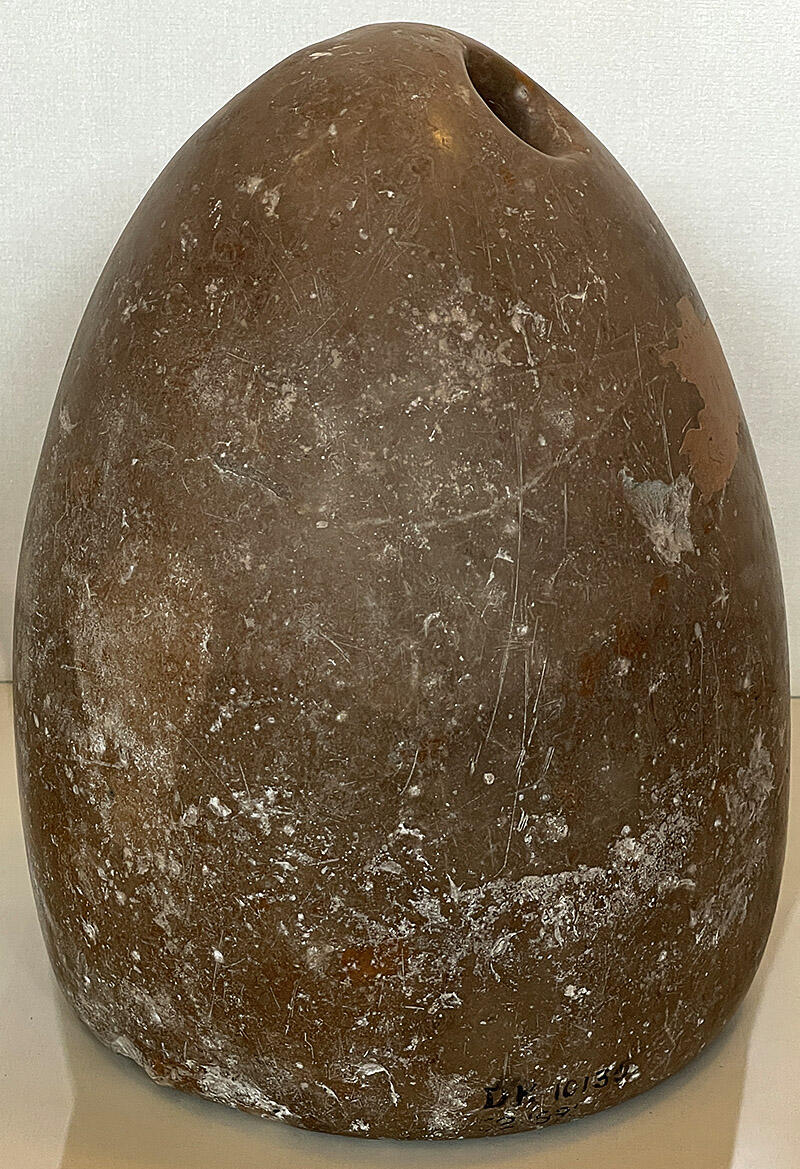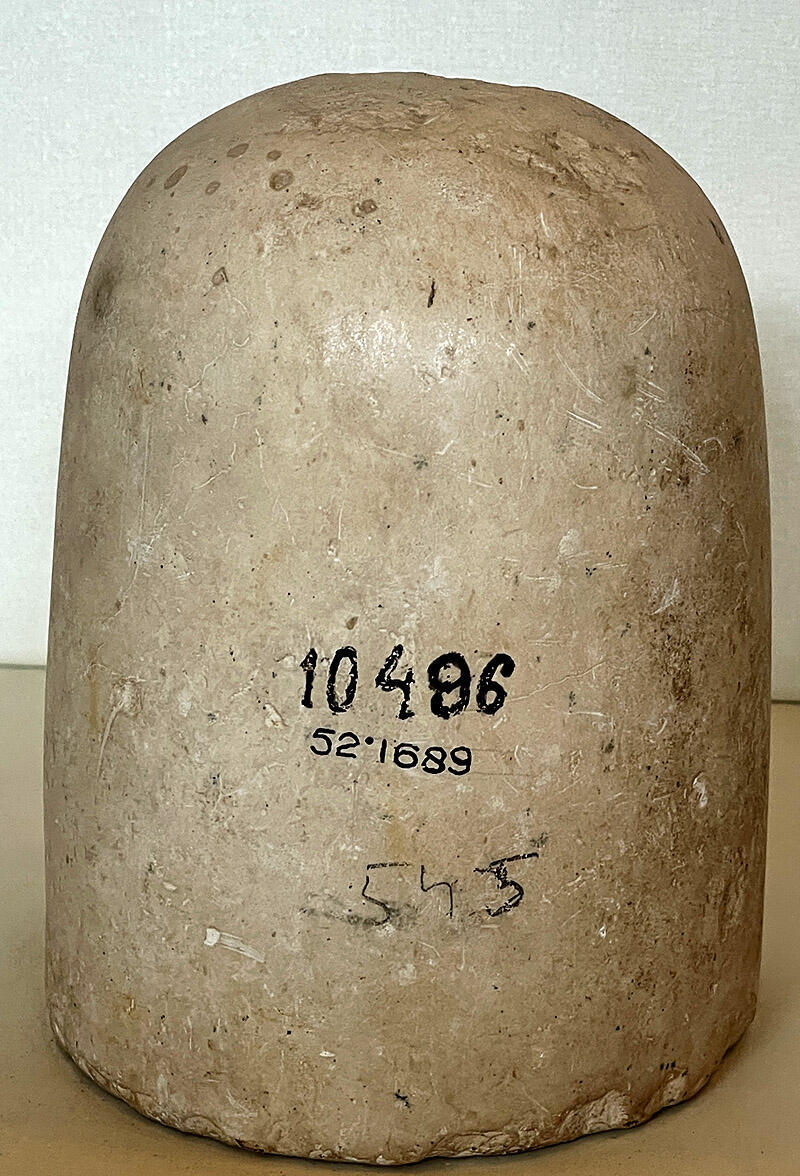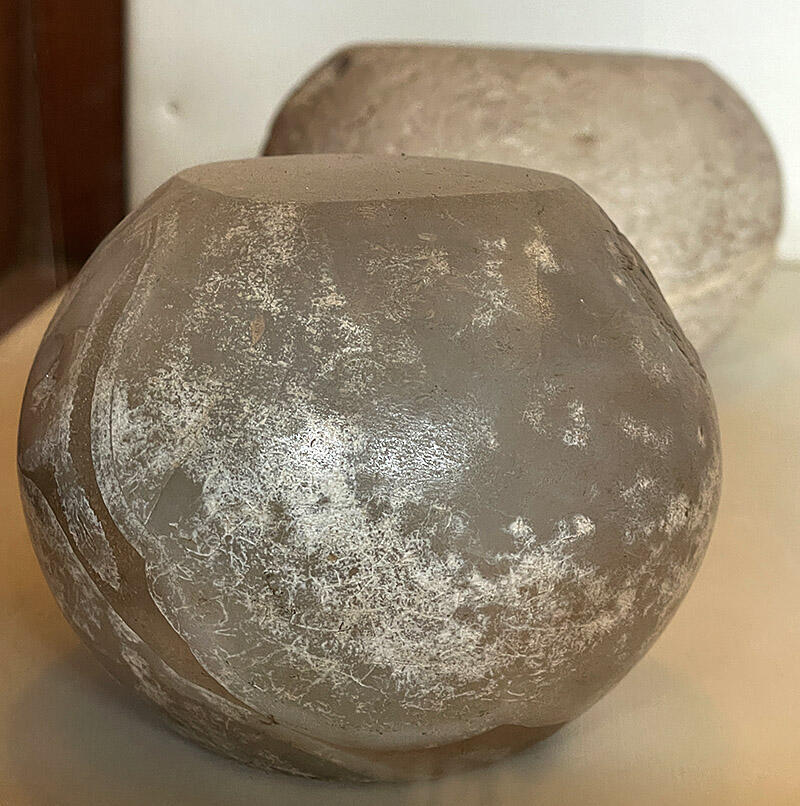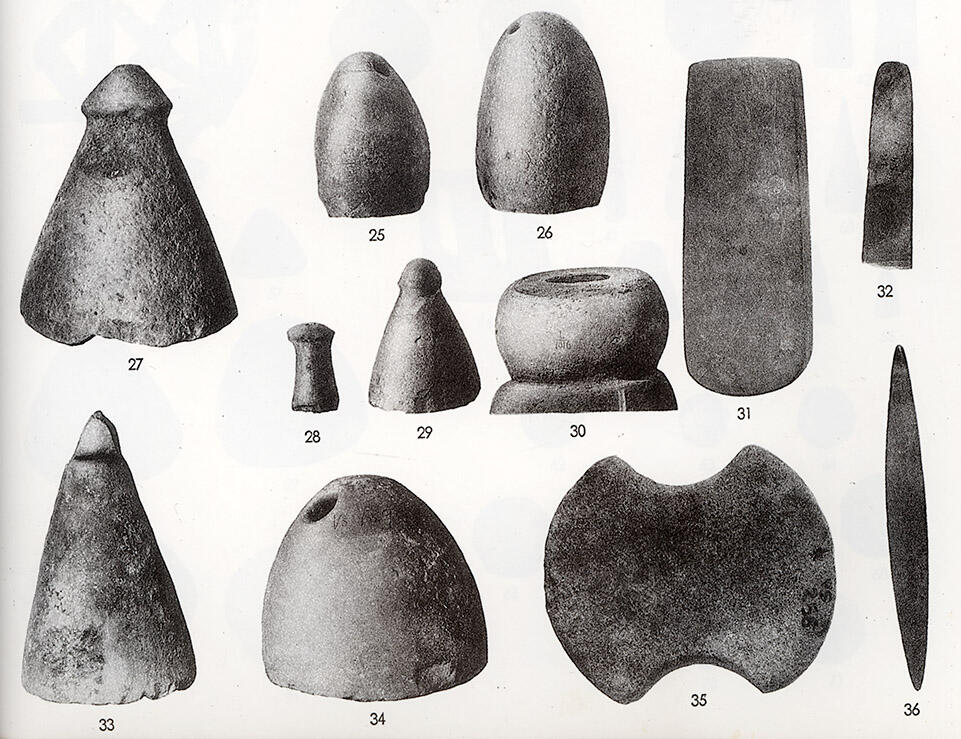Sir John Marshall writes about weights (there are three candidates shown above) Mohenjo-daro (p. 461):
"The large number of weights that have been found at Mohenjo-daro, in small houses as well as large, suggests that the housewife realized the necessity of checking the weights of the goods she purchased. These weights range from large examples that had to be lifted with a rope or metal ring to very small ones which were probably used by jewellers for weighing precious metals. The majority are cubical in shape, quite unlike those used in Babylonia. We have as yet found no scales; probably these were of very simple pattern, and if they were made of wood, as seems likely, they would have perished long ago.
"The large number of the weights found is remarkable. I do not think any ancient site outside India has produced so many. They are not found in any special place, which might be a manufactory, but are well distributed all over the city. The careful way in which they aer made and the hard stone of which they are composed suggest that the authorities had some surveillance over their manufacture; it may be that the use of false weights was a penal offence."
He describes the similar weights [shown in Image 4] (p. 463):
"Type (d) : Weights with Hole for Suspension (PI. CXXX, 25, 26, and 34).-Three heavy conical stone objects with holes bored in their tops for a cord were probably used as weights. Their careful finish and great size make it unlikely that they were used as loom-weights.
"No. 25 (HR 4618) si made of green slate and has a carefully smoothed surface. It is 8 inches high and its flat, semi-polished base is 5•8 inches in diameter. Holes, each 0•95 inch in diameter, bored diagonally downwards on either side of the apex, meet ni the middle of the top of the stone. Level, 4 ft. 5 in. below surface. The weight could not be determined satisfactorily owing to the stone being badly chipped. Room 11, Structure L, Block 7, HR Area.
"No. 26 (DK 3079), which is of grey limestone with a roughly finished surface, is 9•9 inches high. Its smooth, but unpolished flatbase is 5•5 inches in diameter. There is a V-shaped hole through the apex, as in No. 2 5 . Its weight si 10•262 kilograms. Level, I ft. 9 in. below surface. Room 2, House I, Block I, Section B, DK Area."
"No. 34 (VS 1899), made from light green slate, is 5'9 inches high, and its slightly concave base, which shows the polish of much wear around the edge, is 7 I inches in diameter. The V-shaped hole through the apex is o• 85 inch in diameter. The weight is 6•903 kilograms. Level, 6 feet below surface. From Room 15, House VIII, VS Area.
"These three weights were probably slung on a rope or metal ring. If the latter, the ring must have been included in the weight, and the weights, therefore, without such rings, would in consequence be only approximate. With such heavy objects as these, one would have expected to find evidence of a great deal of wear at the edges of the base where they were presumably dragged along the ground. No. 34 alone shows traces of this kind of wear.
A weight, which is similar to these in every respect,' has been found, in conjunction with painted pottery, at Nal in southern Baluchistan. Weights of this shape are also known at Harappa in the Panjab and are still in use in India. I can find no evidence of their occurrence outside India, despite their simple and somewhat obvious shape."








